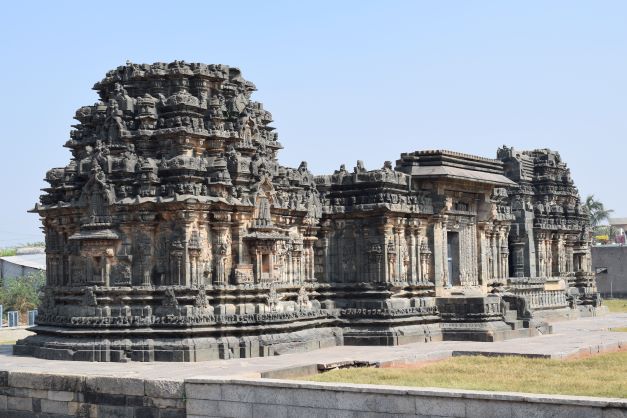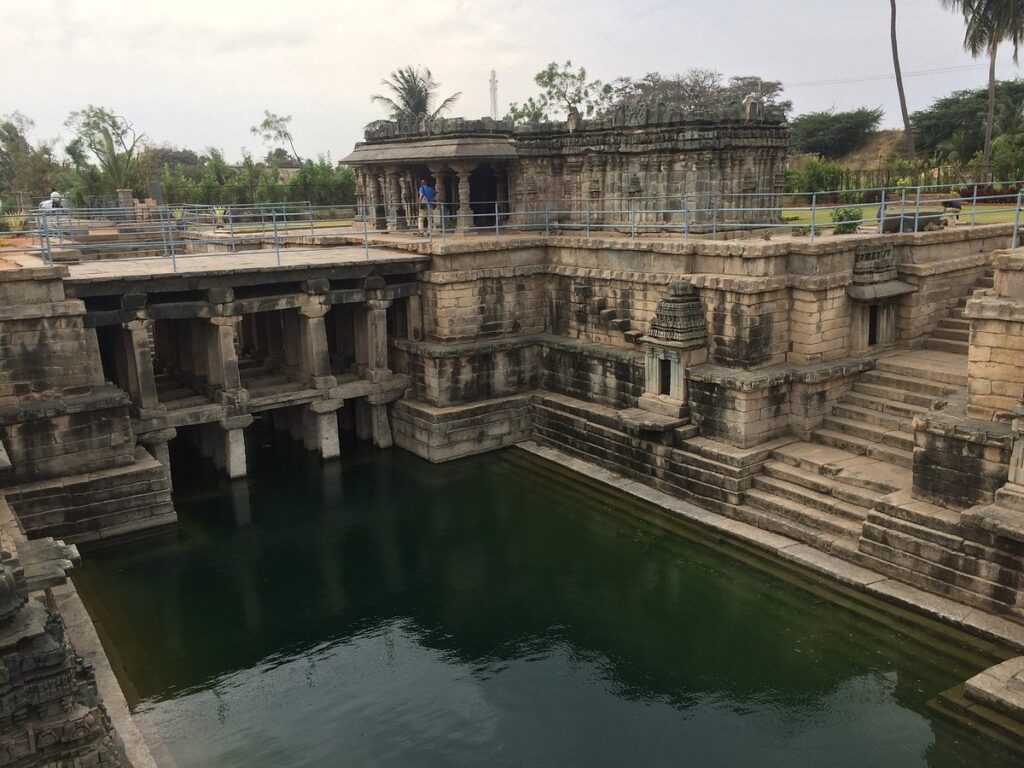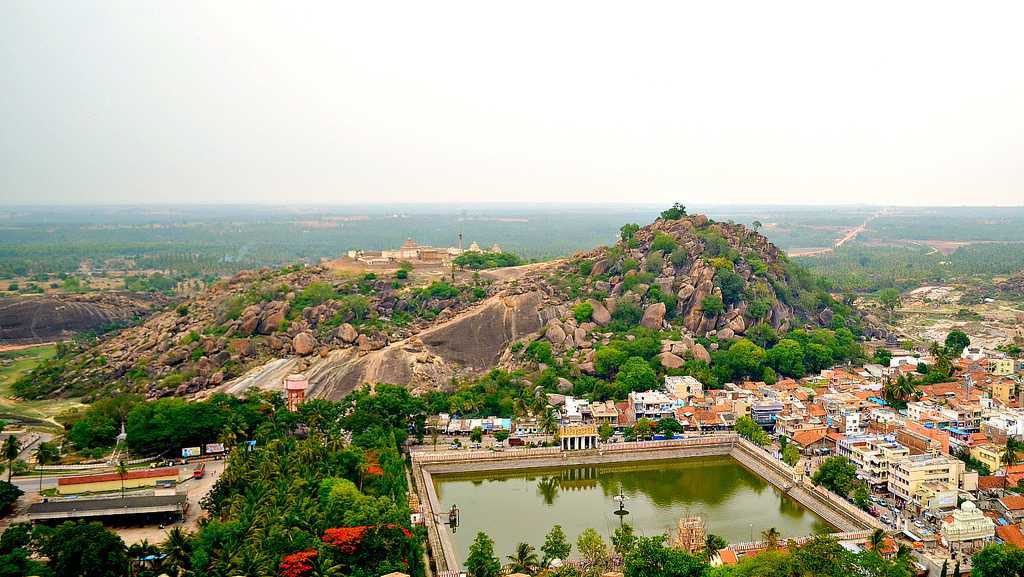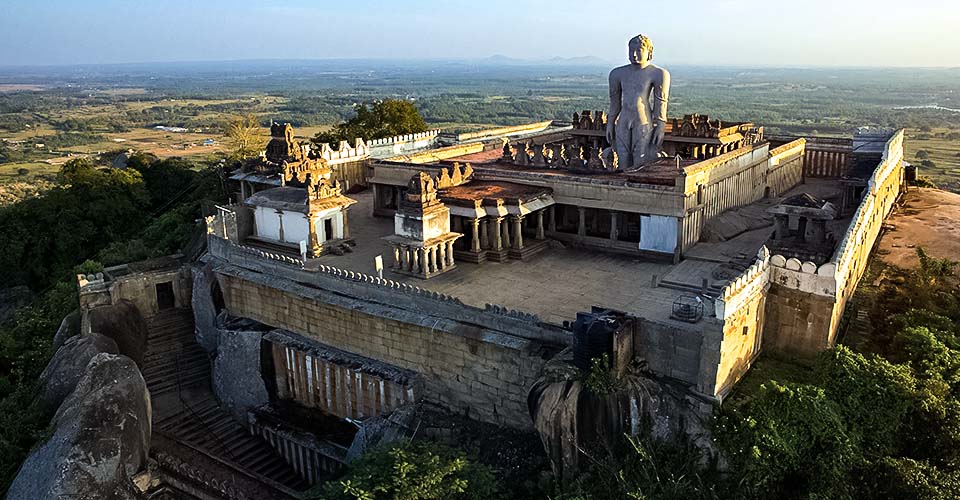After recent inclusion of Hoysala temples in UNESCO World Heritage Sites, the tourism in Karnataka is expected to be on rise. With the aim of boosting the tourism and better upkeeping of the heritage, two prime monuments in Karnataka have been proposed for the prestigious UNESCO World Heritage list. The one is Shravanabelagola in Hassan and the other is Lakkundi in Gadag districts. These have been chosen by the State Department of Archaeology Museums and Heritage (DAMH). In this article, let’s understand the significance of the two places.
Lakkundi

Lakkundi, also referred to as Lokkugundi, was a major city prior to the 14th century. It is now a village in Gadag District of Karnataka. By 10th century, it was already a major economic and commerce center with mint operations for South India, one mentioned in Kannada and Sanskrit inscriptions and texts. By 12th century, many Hindu and Jain temples had been consecrated here, along with public infrastructure such as stepwells and water reservoirs. Among the major temples are the Brahma Jinalaya, Mallikarjuna, Lakshminarayana, Manikeshwara, Naganatha, Kumbheshvara, Nanneshwara, Someshwara, Narayana, Nilakanteshwara, Kasivisesvara, Virabhadhara, Virupaksha, and others. As its importance and wealth grew, Lakkundi became one of the capitals of the Hoysala Empire.

In the 14th century, the city was targeted by Islamic Sultanates as they sought loot and political dominance over the South Indian Hindu kingdoms. The village of Lakkundi contains over 50 temple ruins, many of which are in poor condition and inhabited by bats. However, the major temples have been restored and are now maintained by the Archaeological Survey of India (ASI). Lakkundi is an important center for the study of Kalyana Chalukya era Hindu architecture, known as the “Lakkundi-school” of architects and craftsmen.
The British archaeologists of the 19th century played a significant role in rediscovering Lakkundi and its significance in Indian art history. The ruins of Lakkundi now highlight the history of Indian art in museums, with some ruins displayed in a local sculpture gallery (museum) and sheds near the temples.
Aside from Hindu and Jain monuments, a Muslim dargah dedicated to Zindeshah Wali is also found in Lakkundi. The site attracts visitors from all over the world due to its rich historical and cultural heritage.
Shravanabelagola

Shravanabelagola is a town located near Channarayapatna of Hassan district of Karnataka. The Gommateshwara Bahubali statue at Shravanabelagola is one of the most important tirthas (pilgrimage destinations) in Jainism, one that reached a peak in architectural and sculptural activity under the patronage of Western Ganga dynasty of Talakad. Chandragupta Maurya is said to have died on the hill of Chandragiri, which is located in Shravanabelagola, in 298 BCE after he became a Jain monk and assumed an ascetic life style.
Shravanabelagola has a total of 560 inscriptions in the town. Shravanabelagola “White Pond of the Shravana” is named with reference to the colossal image of Gommaṭa – the prefix Śravaṇa serves to distinguish it from other Belagolas with the prefixes Hale- and Kodi-, while Beḷagoḷa “white pond” is an allusion to the pond in the middle of the town. The Sanskrit equivalents Śvetasarovara, Dhavalasarovara and Dhavalasarasa used in the inscriptions that support this meaning.

Shravanabelagola has two hills, Chandragiri and Vindhyagiri. Acharya Bhadrabahu and his pupil Chandragupta Maurya are believed to have meditated there. Chandragupta Basadi, which was dedicated to Chandragupta Maurya, was originally built there by Ashoka in the third century BC. Chandragiri also has memorials to numerous monks and Śrāvakas who have meditated there since the fifth century AD, including the last king of the Rashtrakuta dynasty of Manyakheta. Chandragiri also has a famous temple built by Chavundaraya.
The 58-feet tall monolithic statue of Gommateshwara is located on Vindyagiri Hill. It is considered to be the world’s largest monolithic statue. The base of the statue has an inscriptions in Prakrit, dating from 981 AD. The inscription praises the king who funded the effort and his general, Chavundaraya, who erected the statue for his mother. Every twelve years, thousands of devotees congregate here to perform the Mahamastakabhisheka, a spectacular ceremony in which the statue is anointed with Water, Turmeric, Rice flour, Sugar cane juice, Sandalwood paste, saffron, and gold and silver flowers. Recently Mahamastakabhisheka was held in 2018 during feb month. The next Mahamastakabhisheka will be held in 2030.
Shravanabelagola, nestled by the Vindhyagiri and Chandragiri Hills, protected by the monolith Bhagwan Bahubali, and home to over 2,300 years of Jain heritage, is a veritable picture postcard of our history and heritage spanning the centuries.

One Response